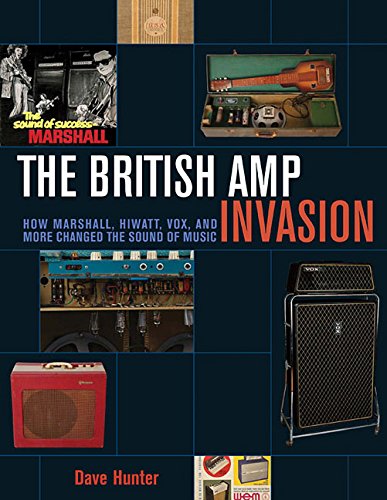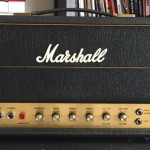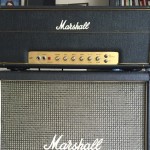 At LegendaryTones we certainly love discussing gear, but make no mistake, the gear is only part of the equation when it comes to tone and being a better player. A great player, with excellent technique and one who has the knowledge to apply musical principles, will not only be more enjoyable to listen to, but also have better overall tone. There certainly is truth to the adage, at least to some degree that “tone is in the fingers.”
At LegendaryTones we certainly love discussing gear, but make no mistake, the gear is only part of the equation when it comes to tone and being a better player. A great player, with excellent technique and one who has the knowledge to apply musical principles, will not only be more enjoyable to listen to, but also have better overall tone. There certainly is truth to the adage, at least to some degree that “tone is in the fingers.”
One such musician who has spent years honing his craft is Dave Weiner (www.daveweiner.com). Dave runs GUITOPIA, on online guitar education website that is packed full of resources designed to make you a better player. Dave’s philosophy is to to teach in ways that focus on effectiveness and efficiency to maximize results. He focuses on creativity and opening up ways for players to develop their own styles. He does not, however, rely on tricks or gimmicks stating that players will become experienced, pro-level guitarists in a short period of time. At the end of the day, it still takes work and practice and what you get out of it is what you put into it.
Read More »
 In 1987, the sound of rock changed forever. It was raw, unapologetic, and drenched in attitude. Tim Caswell’s infamous #39 mod turned a standard Marshall into a snarling, harmonically rich beast, and with it provided a tone that fueled a generation of guitar heroes and defined an era when rock truly ruled the airwaves.
In 1987, the sound of rock changed forever. It was raw, unapologetic, and drenched in attitude. Tim Caswell’s infamous #39 mod turned a standard Marshall into a snarling, harmonically rich beast, and with it provided a tone that fueled a generation of guitar heroes and defined an era when rock truly ruled the airwaves. Introducing the LegendaryTones HOT MOD V2 EVO, a plug-in dual tube module specifically engineered to dramatically increase gain in Marshall and other amps. The HOT MOD V2 EVO requires NO chassis cutting, drilled holes, or wiring modifications to your amp – it simply and easily installs in place of the appropriate cathode follower (often V2) position. The circuit within harnesses the power of an additional gain stage now running an additional tube.
Introducing the LegendaryTones HOT MOD V2 EVO, a plug-in dual tube module specifically engineered to dramatically increase gain in Marshall and other amps. The HOT MOD V2 EVO requires NO chassis cutting, drilled holes, or wiring modifications to your amp – it simply and easily installs in place of the appropriate cathode follower (often V2) position. The circuit within harnesses the power of an additional gain stage now running an additional tube. We are honored and humbled by the great feedback we’ve received from customers since releasing the
We are honored and humbled by the great feedback we’ve received from customers since releasing the  Dave Hunter’s latest book is entitled, The British Amp Invasion: How Marshall, Hiwatt, Vox, and More Changed the Sound of Music, and covers a span of the influence of British amplification from the late 1950s onward. As an industry, the companies behind the amplifiers are a fascinating study, not only from a design and sonic perspective, but also because of the stories themselves that surround their business success and growth (or for some, their bad deals and decline).
Dave Hunter’s latest book is entitled, The British Amp Invasion: How Marshall, Hiwatt, Vox, and More Changed the Sound of Music, and covers a span of the influence of British amplification from the late 1950s onward. As an industry, the companies behind the amplifiers are a fascinating study, not only from a design and sonic perspective, but also because of the stories themselves that surround their business success and growth (or for some, their bad deals and decline). Changing guitar strings is a lot like shaving; it’s fun and challenging at first, but do it a few thousand times, the less fun it becomes. Upgrading from a Bic shaver to three-blade cost me a little more, but it made the task easier and I got a better shave that lasted longer. When it came to making strings last, I boiled them, or cleaned them with Windex to stretch a set for a few more days. So, any string that promised a longer useful life, I’d try out a set, even when they cost more than my normal nickel/steel brand.
Changing guitar strings is a lot like shaving; it’s fun and challenging at first, but do it a few thousand times, the less fun it becomes. Upgrading from a Bic shaver to three-blade cost me a little more, but it made the task easier and I got a better shave that lasted longer. When it came to making strings last, I boiled them, or cleaned them with Windex to stretch a set for a few more days. So, any string that promised a longer useful life, I’d try out a set, even when they cost more than my normal nickel/steel brand. At LegendaryTones we certainly love discussing gear, but make no mistake, the gear is only part of the equation when it comes to tone and being a better player. A great player, with excellent technique and one who has the knowledge to apply musical principles, will not only be more enjoyable to listen to, but also have better overall tone. There certainly is truth to the adage, at least to some degree that “tone is in the fingers.”
At LegendaryTones we certainly love discussing gear, but make no mistake, the gear is only part of the equation when it comes to tone and being a better player. A great player, with excellent technique and one who has the knowledge to apply musical principles, will not only be more enjoyable to listen to, but also have better overall tone. There certainly is truth to the adage, at least to some degree that “tone is in the fingers.”
